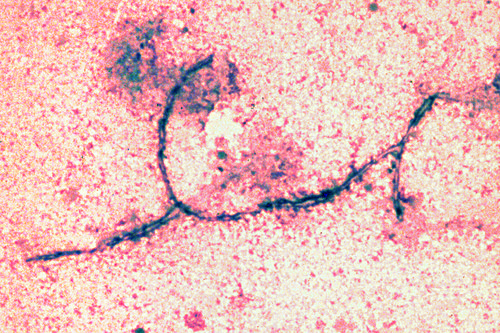Difference between revisions of "Cytology Q&A 12"
Ggaitskell (talk | contribs) |
|||
| (2 intermediate revisions by 2 users not shown) | |||
| Line 1: | Line 1: | ||
| − | {{Template:Manson}} | + | {{Template:Manson |
| + | |book = Cytology Q&A}} | ||
| − | [[Image:|centre|500px]] | + | [[Image:Cytology 12.JPG|centre|500px]] |
<br /> | <br /> | ||
Latest revision as of 16:01, 27 September 2011
| This question was provided by Manson Publishing as part of the OVAL Project. See more Cytology Q&A. |
A 13-year old neutered male DSH cat presents with inspiratory dyspnoea, frequent sneezing, congestion, weight loss and partial anorexia of three months’ duration. Physical examination reveals bilateral mucopurulent nasal discharge. Amoxicillin/clavulanic acid has been administered unsuccessfully. Vaccinations are up-to-date and the cat is free roaming. A smear is prepared from a nasal flush (Wright’s, ×40). Cranial radiographs do not reveal any osteolytic lesions or evidence of a mass.
| Question | Answer | Article | |
| What is your diagnosis based on cytological observation? | The microphotograph illustrates a hyphal structure compatible with Aspergillus species. Nasal aspergillosis is therefore the likely diagnosis. |
Link to Article | |
| What other diagnostic tests can be performed to support this diagnosis? |
|
Link to Article | |
| What treatment can be recommended? | Oral fluconazole or itraconazole can be administered; topical infusion of an antifungal drug such as clotrimazole has been shown to be effective in dogs, and may clear infections more successfully than systemic therapy. Note: Aspergillus organisms in cytological preparations are usually observed as uniform, septate hyphae of 3–6 microns in width with 45-degree angle (dichotomous) branching. |
Link to Article | |
